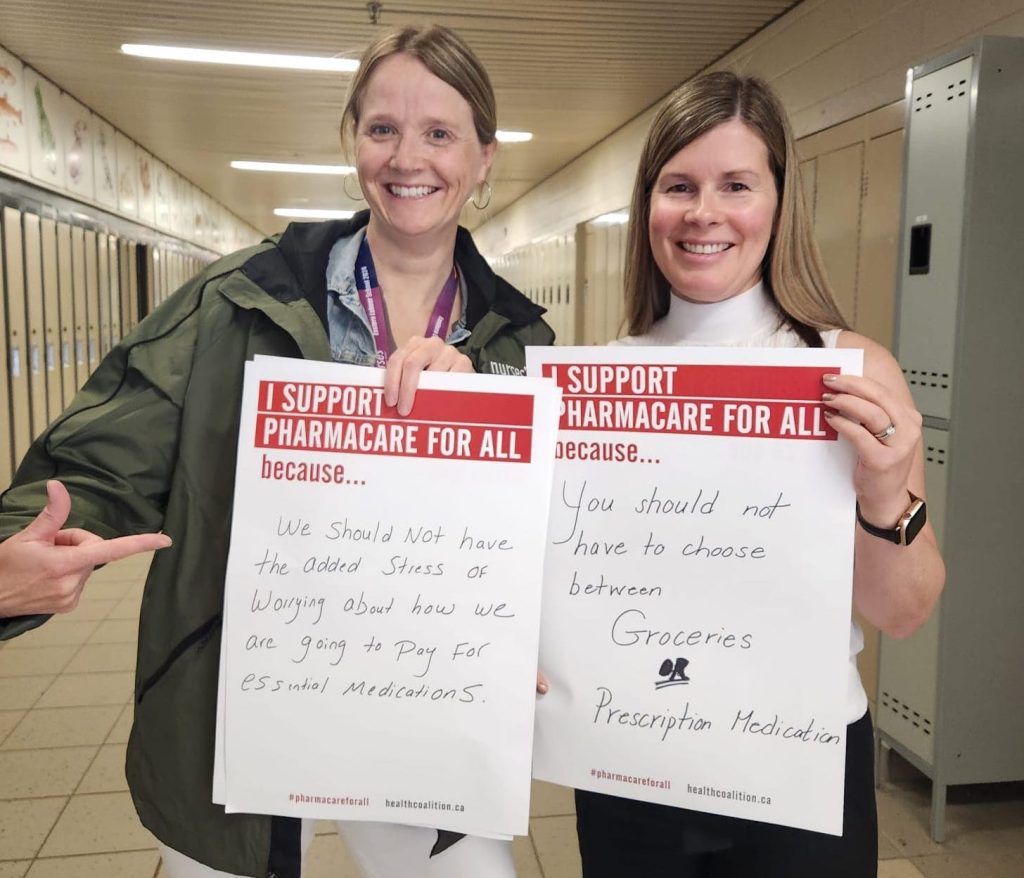Workers want pharmacare: Jagmeet Singh
This week’s edition of who is saying what about public health care is compiled by Pat Van Horne.
Workers want pharmacare: NDP Leader Jagmeet Singh
“This bill is passed. Now we want to see deals (with provinces), so our focus is on forcing this Liberal government to get those deals signed . . . Unions are very much in favour of this. . . Workers are very much in favour because they know that having to negotiate medical benefits that include drug coverage at the negotiating table is incredibly costly. . . They would love to have this taken off their plate and use that money for better pay, better wages or other benefits,” said Federal NDP Leader Jagmeet Singh, echoing comments made by union leaders, including United Steelworkers National Director Marty Warren and Unifor President Lana Payne, to CBC News, October 11, 2024

What’s in pharmacare?
“The pharmacare legislation includes universal access to contraception and diabetes medications, with the goal to expand the number of covered medications in the future. It also implements a universal first-dollar coverage pharmacare plan for medications, meaning that the government pays the costs upfront. The diabetes medications covered include first-line treatments that lower blood glucose levels, providing Canadians with access to essential therapies such as:
“Insulin, which is used by patients with Type 1 and Type 2 diabetes;
“Metformin, which is used by patients with Type 2 diabetes;
“Medications often used in combination with insulin and metformin by patients with Type 2 diabetes, including sulfonylureas and SGLT-2 inhibitors. . . You can find a full list of the covered diabetes medication on the government of Canada’s website. The bill also covers access to contraceptives for roughly nine million Canadians of reproductive age,” reported Katie Dangerfield for Global News, October 11, 2024
One busy Toronto hospital has slashed wait times but available beds is still a problem
“One of the root problems in health care is the never-ending flow of patients . . . What you’re always battling every day in your work environment is, who needs a bed? How quickly can I get them there?” said Barb Collins, chief executive officer of Humber River Health, to the Globe and Mail on October 12, 2024. Humber River Health has shorter admission wait times for emergency patients than the Ontario average of about 17 hours, and significantly shorter wait times than Canada’s worst-performing facilities, where patients can be stuck in emergency departments for two or three days.
Alberta reaches pay deal for resident doctors, nurses still negotiating
“Unless this UCP (United Conservative Party) government stops stalling and signs the agreement they have already reached with (family) physicians, many will go to other provinces as soon as they complete their residency,” said Alberta NDP Opposition health critic Sarah Hoffman to The Canadian Press, October 9 2024
Manitoba doctor recruitment on the rise, but still second-lowest per capita rate in Canada
“In order for us to be successful in finding doctors to come and work here, we have to be providing that one-to-one support . . .How do we help? What are you missing? Where can we steer you to? What more information do you need? Here’s information on the community that was looking for a physician. There’s that constant staying in touch with them,” said retention and recruitment lead Michele Lane to the Winnipeg Free Press, October 10 2024
Mental health research needs more funding from federal and provincial governments
“The World Health Organization has made the very salient point that for every dollar invested in scaling up treatments for mental illnesses, a fourfold return on investment is realized. Mental health is an issue that directly or indirectly affects most Canadians and it’s time that a more proactive approach be adopted by federal and provincial governments,” said Dr. Hymie Anisman, professor of neuroscience, Carleton University, to the Hill Times, October 7, 2024
Invest in World Health Organization for healthier, safer world
“All countries must invest in their common safety and protection: no one is safe until everyone is safe. This we can only do by looking beyond borders, regionally and globally. We must strengthen health systems and health security worldwide, supporting all countries around the globe, especially the least developed,” wrote Dr. Tedros Adhanom Ghebreyesus, Geneviève Darrieussecq, Jan Christian Vestre, Karl Lauterbach and Abdallahi Ould Wedih in Al Jazeera, October 14 2024
The case for internationally trained physicians in Canada
“We propose two cost-effective, actionable steps the federal government can take to boost the number of family doctors in Canada by 50 per cent annually. . . First, the government should directly fund medical faculties to create 750 new family medicine residency positions each year, a 50 per cent increase over the 1,500 family doctors who graduate annually. . .Within two years of this starting, the first cohort of 750 family physicians would be ready to begin serving patients. This initiative could add 6,000 new family doctors over the next decade, each serving approximately 1,500 patients. That’s more than 1.1 million Canadians gaining access to care annually, and nearly nine million within a decade,” wrote Independent Senators Mohaamed-Iqbal Ravalia, Ratna Omidvar, and Immigration Adviser Kareem El-Assal in the Hill Times, October 15, 2024



